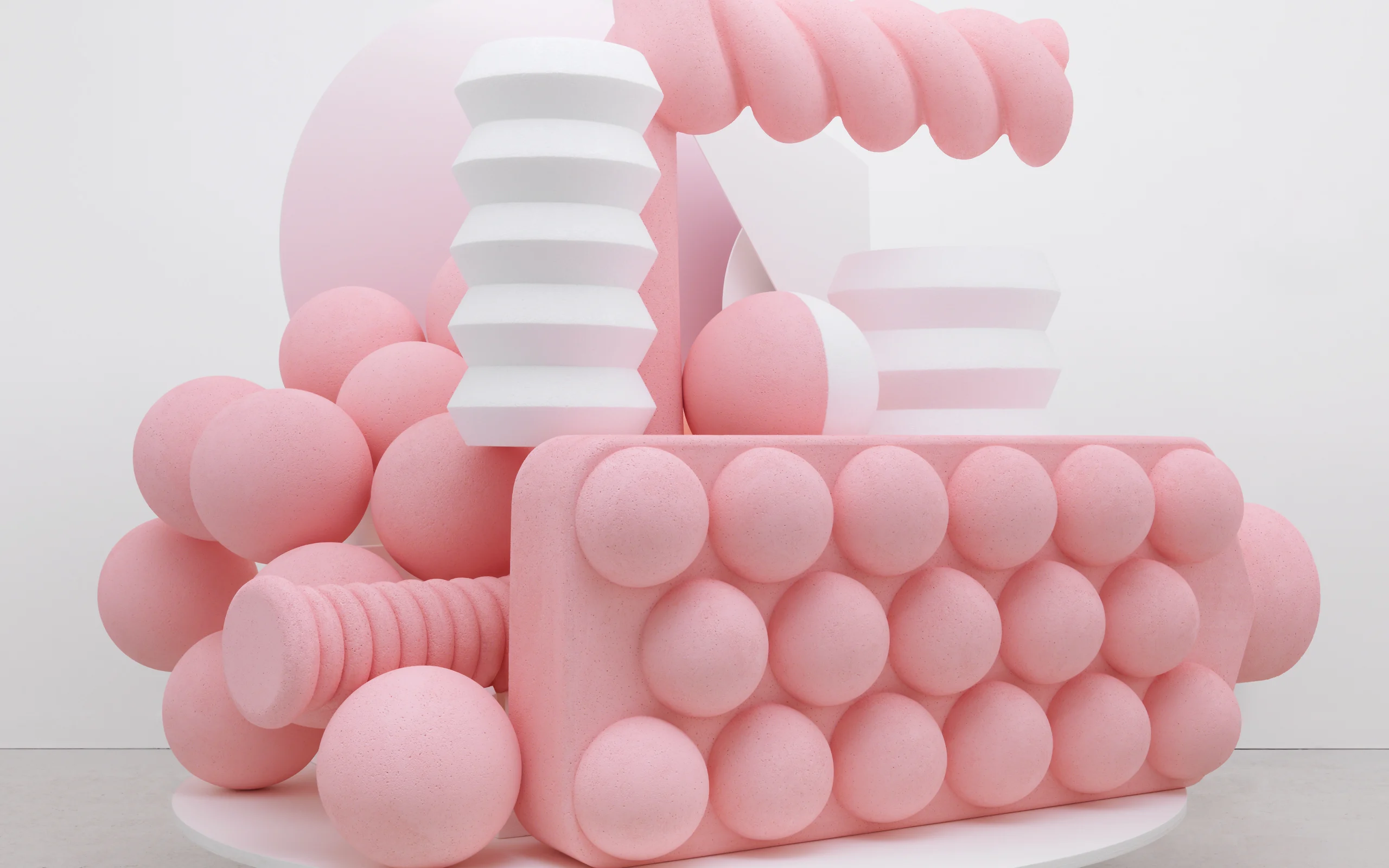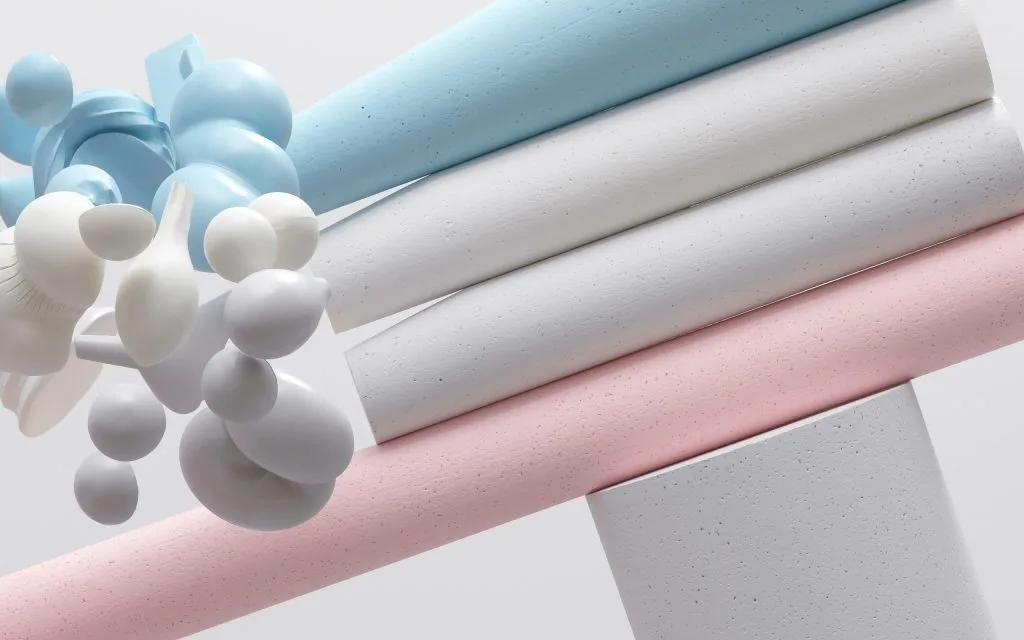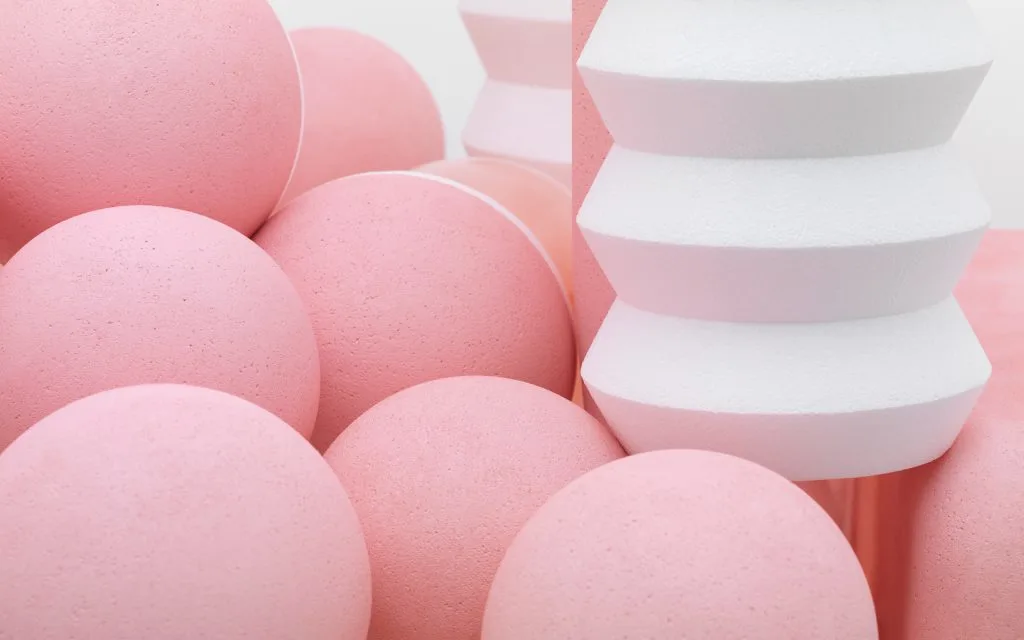

It’s not easy to categorise the work of Elise. The London-based creative could be described variously as an artist, a sculptor, a set-designer, a photographer, a 3D designer (even a 3D illustrator). The fact she goes by only one name adds to the mystique.
This ambiguity extends into her work. Her still-lifes teeter between the abstract and the recognisable, the organic and the man-made, the stylish and the absurd. They combine color and texture into unusual forms, simultaneously baffling and beguiling.
Elise herself revels in these changing registers. Trained at the Chelsea School of Art, she has long been obsessed with ideas about process and the conceptual underpinning of how she makes (as much as, if not more than, what she makes).

“Industrial and digital processes produce ‘idealised,’ flawless forms, while the hand creates gestural singularity: the unrepeatable and unique,” she says.
“Machine production empowers a sense of a perfect, objective continuum, whereas the handmade binds the artist and the viewer to the act of making. A tension exists between these two contrasting ideas, and I think my style has evolved out of a conceptual preoccupation with this.”
Although her process always starts with sketching, her final pieces use everything from paper to paint, foam to plastic to found objects that catch her eye in discount shops. But the materials themselves are only the start, as Elise pressgangs them into all manner of strange and beautiful uses.

“I enjoy pushing my materials against the edges of their physical possibilities,” she explains. “If their contours are machine-perfect, their surfaces are often puckered, dimpled, or full of detail. If their surfaces are shiny and immaculate, their shapes are stretched to the point where they threaten to come apart.
“I exaggerate materials and textures, artificially enhancing their qualities to induce a sort of giddy, spatial hysteria. I aim for a sculptural hyperrealism, a three dimensional version of Photoshop ‘over-sharpening’, where realism slides sideways into dream.”
Inspired and intrigued by the use of found objects, she enjoys reimagining things we take for granted, what she calls “the everyday language of things.”
“I’m interested in forms that have already been visually ‘processed’, the mass-manufactured, mundane consumables that we digest and discard. The plastic curves of an air conditioning vent; the inflated skin of bubble wrap; the concave surface of a satellite dish.”

By removing them from their usual contexts, she moves often very banal objects into “a new sculptural space.” And it’s important to say this is all done in-camera – there is no CGI trickery helping enhance her creations.
An eclectic roster of clients – from Sony and Ford to The New York Times and Wallpaper* – have embraced the uncertainty in which Elise specializes. And with a constant timetable of client work and self-initiated projects, her studio is, as you might expect,a joyously messy creative jumble.
“I’ve always liked the idea that it could be perfect and pristine, but instead it’s a colourful, cacophonous mixture of materials and strange forms,” Elise says. “It functions as a three dimensional book of sketches, full of half-made sculptural elements, diverse objects and materials.
“The space continuously evolves, mirroring the changing colours and processes of the pieces I’m creating. So the studio is, in many ways, part of my imagination, where half-formed thoughts are completed.”
The result, she concedes, may look to a visitor like chaos. “But I’d like to think that anyone coming into the space also can appreciate its ever-evolving energy.”





